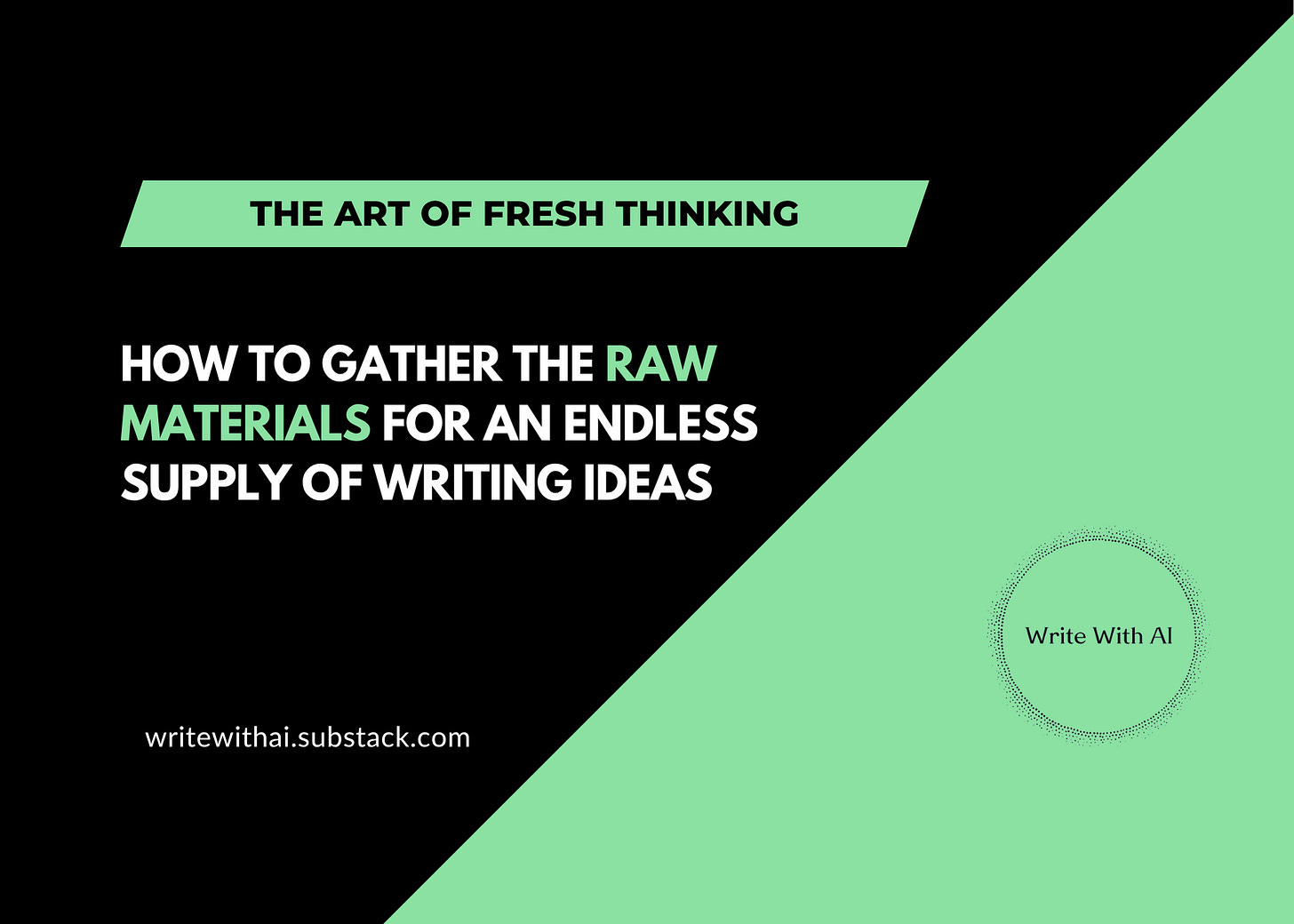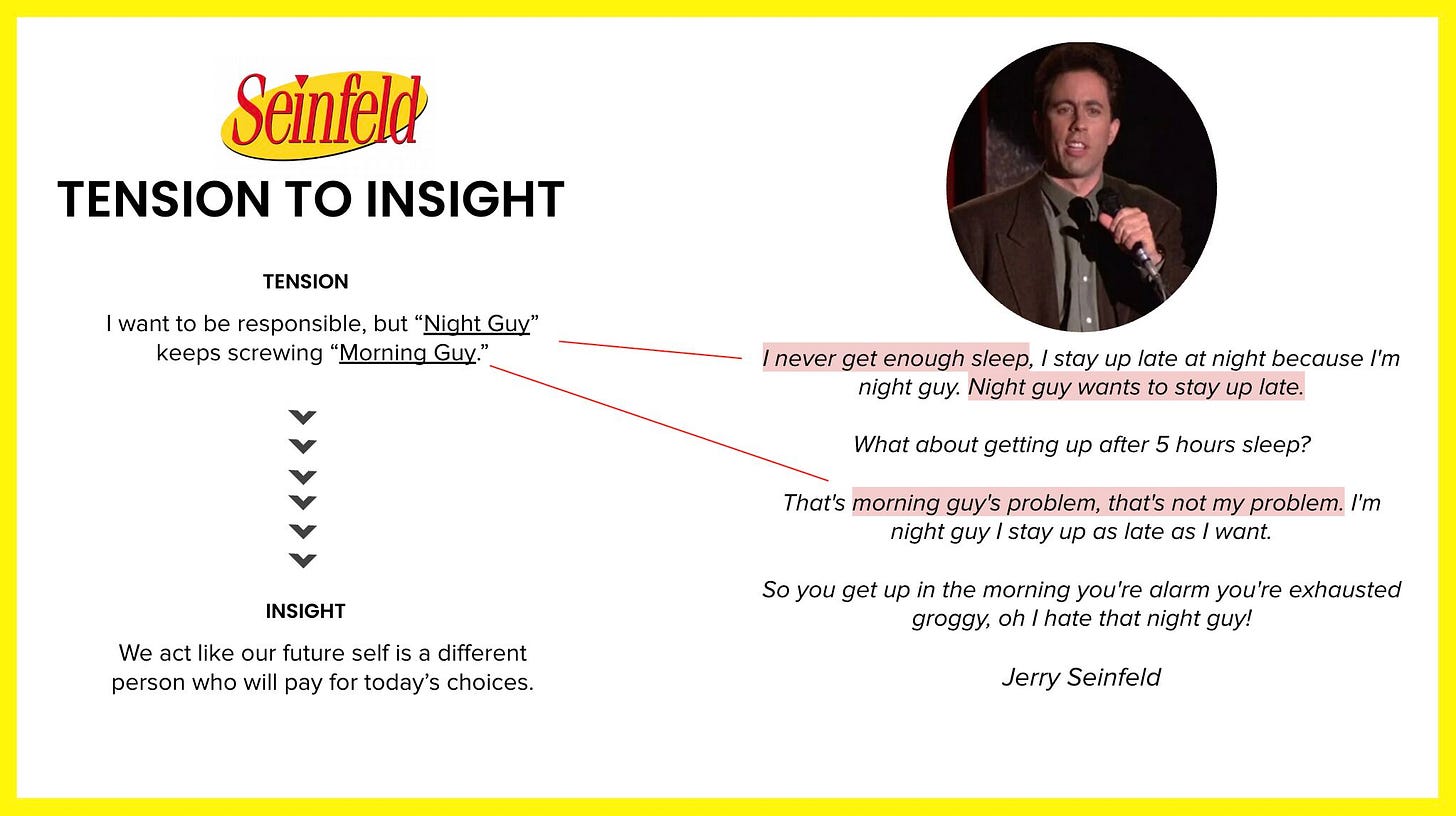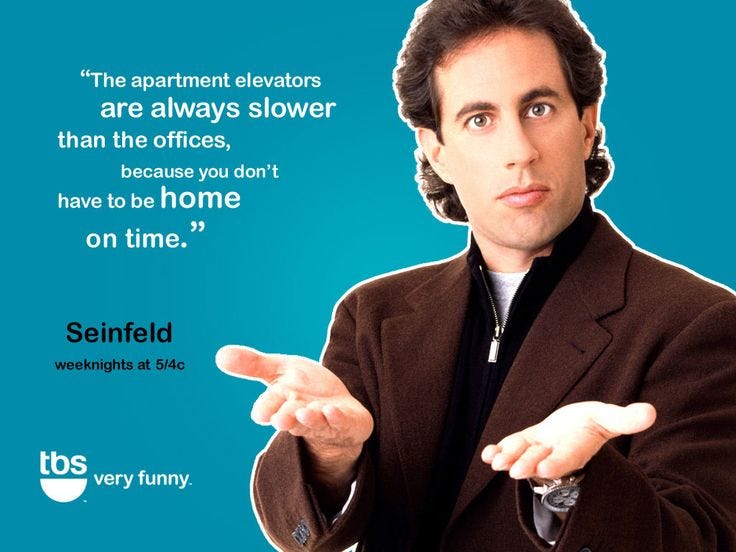6 World-Class "Noticing" Strategies From The King Of Observational Comedy
I want to give you 6 techniques from legendary comedian Jerry Seinfeld — that will help you become the kind of world-class thinker who notices what everyone else misses.
Jerry Seinfeld is the master of observational comedy.
His sitcom generated over $4 billion in syndication revenue. He’s been called “the greatest observational comedian who ever lived” by Judd Apatow and “clearly the standard of excellence in observational comedy” by the Los Angeles Times.
And the techniques Jerry uses to find humor in everyday life are the same techniques that can make you a better thinker, writer, and observer of human behavior.
Let’s dive in!
Strategy 1: Question What Nobody Questions
Jerry built a billion-dollar career on one skill:
Noticing what everyone else ignores.
The reason he’s so funny is because he makes the invisible visible—he shows you what you see every day but never question.
He pays attention, picks up on the little nuances he sees while observing the world around him, and then he sells those ideas to you for $150 per ticket to a comedy show.
Why are cereal boxes so tall? (Companies want maximum shelf presence)
Why do people jog in place at a red light? (Social pressure to look committed to fitness)
Why do people clap when the plane lands? (Celebrating the pilot for... doing their job?)
The most interesting ideas are sitting right in front of you, hiding in plain sight.
Look for what people do automatically without thinking.
How people text. How people shop. How people wait in line. How people order coffee. How people end Zoom calls.
Every default behavior is a potential idea. Your job is to question why the default exists.
Pick one routine you do daily. Ask yourself: “Why do I do this? Who decided this was the way?” Write down what you find.
When you start questioning defaults, you’ll never run out of ideas to write about.
Strategy 2: Show The Problem → Solution → Outcome Clearly
Whether you are telling jokes at the Improv in NYC, or you’re writing a long-form article on Substack, you are selling your ideas.
And in order to “sell” your audience on your ideas, you need to communicate the value clearly and concisely. It doesn’t matter if you write a 6 word joke or a 6,000 word mini-book. Your audience doesn’t care about word count.
All they care about is:
Problem: What are you solving?
Solution: How are you solving it?
Outcome: What do they unlock?
The reader weighs the perceived benefits of your problem, solution, and outcome against their own expectations. That’s it.
Seinfeld’s jokes work because they violate those expectations. You expect lampshades to make sense (outcome). He shows you the problem (blocks the light). Suddenly the solution everyone accepts (putting shades on lamps) looks absurd. You laugh because your expectations just got flipped.
Now, conventional wisdom says your job as a writer is to solve problems “better” than everyone else. Or provide “better” solutions. Or unlock “better” outcomes than the competition.
But this is reflexive thinking—which means it’s a very bad strategy.
Your job is not to look at other people’s ideas, give in to an emotional reflex (”I’m going to crush you!!!”), and try to create something “better.” Your job is to reflect on your own mental models, think, and introduce the world to ideas that are new, different, and fresh.
But before you can be different, you need to notice “what is” first.
And the easiest place to start is problems, solutions, and outcomes.
Strategy 3: Be A Contradiction Collector
Problems hide in plain sight as contradictions.
Seinfeld notices “rush hour” traffic moves slower than any other time. The name contradicts reality. That’s the problem. It doesn’t make sense—and that’s exactly what makes it great material.
Every industry is filled with contradictions people have stopped noticing.
“We want innovation but punish failure.”
“We value customer feedback but never implement it.”
“We say speed matters but require 6 approval layers.”
These contradictions are everywhere. Most people just stop seeing them.
Strategy 4: Watch What People Do, Not What They Say
Seinfeld says there’s no shortcut to understanding people.
And he’s right. The more you observe human behavior, the better your writing becomes. Because people don’t tell you the truth about what they struggle with.
They show you through their actions.
Seinfeld built his career watching the gap between intention and action. People say they’re “just resting their eyes” but they’re sleeping. They say they’ll “start tomorrow” but they never do. They say the meeting will be quick but it runs an hour over.
Next time someone tells you what they want, don’t write it down. Instead, watch what they actually do for the next week.
Strategy 5: Track Small Annoyances
Tiny problems are windows into bigger truths.
Most people dismiss minor frustrations:
“It’s not a big deal.”
“That’s just how it is.”
“Everyone deals with this.”
But those small annoyances are signals pointing to friction, inefficiency, and unmet needs.
Seinfeld noticed the awkwardness of ending a phone call. Nobody has a good system. You both just keep saying “alright” and “okay” until someone commits to hanging up first.
Write down three things that mildly irritate you. Then ask: “What does this reveal about how people operate?”
Strategy 6: Spot What’s Universally Familiar But Never Consciously Noted
This is the hardest skill to develop but the most valuable when you nail it.
Seinfeld does this better than anyone:
Pretending you weren’t asleep when someone wakes you
Opening the fridge multiple times hoping food appeared
Panicking when your phone rings and you forgot phones make sound
None of these are problems. They’re not even annoyances. They’re just... life.
But the moment he points them out, you realize: “I do that too and never noticed.”
For writers, this is where you create “aha moments” that make your audience feel deeply understood. When you describe something they’ve felt a thousand times but never had words for, you validate their experience.
Where To Observe Your Readers
Noticing isn’t passive. You have to go looking.
Make a list of places where you can observe your readers. Then practice this simple exercise:
“I see...”
What do you observe? Write it down exactly as you see it.
“But I also see...”
What’s contradictory? What doesn’t line up? Where’s the tension?
Here are a few places to start observing:
Comment sections on popular posts in your niche
Reddit threads where your audience hangs out
YouTube comments on competitor videos
DMs and emails you receive
Conversations you have in real life
Questions people ask you repeatedly
Start small. Pick one place to observe today.
Then spend 10 minutes writing down what you notice.
Ask Claude Or ChatGPT To Unpack Your Observations
Now, instead of staring at your observation and wondering “So what?”, you can get AI to help you dig a little deeper.
Here’s how:
Keep reading with a 7-day free trial
Subscribe to Write With AI to keep reading this post and get 7 days of free access to the full post archives.






